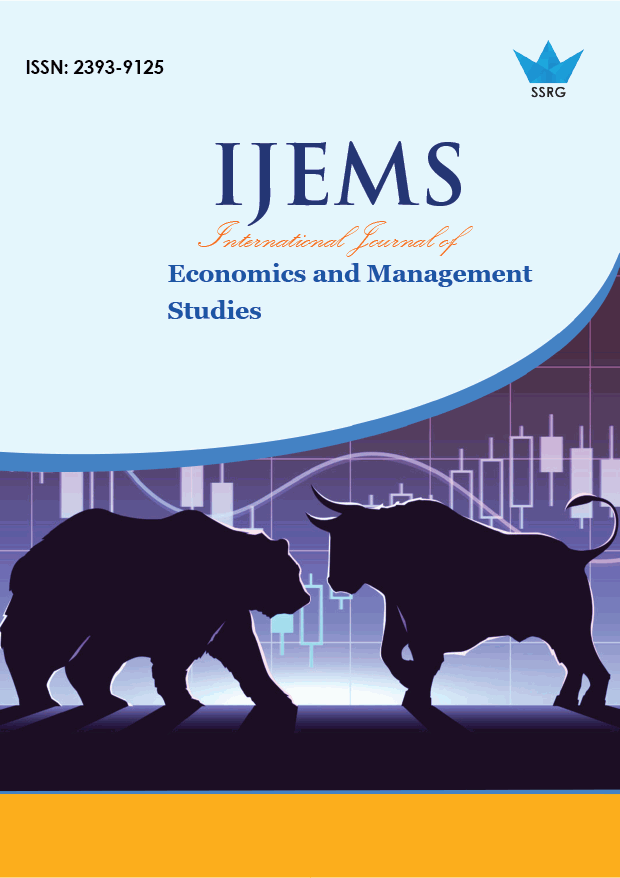Level of English Proficiency of Freshman Criminology Students in the University of Eastern Philippines

| International Journal of Economics and Management Studies |
| © 2019 by SSRG - IJEMS Journal |
| Volume 6 Issue 2 |
| Year of Publication : 2019 |
| Authors : Jezrelle Ciasha Aliposa Dela Cerna |
How to Cite?
Jezrelle Ciasha Aliposa Dela Cerna, "Level of English Proficiency of Freshman Criminology Students in the University of Eastern Philippines," SSRG International Journal of Economics and Management Studies, vol. 6, no. 2, pp. 113-119, 2019. Crossref, https://doi.org/10.14445/23939125/IJEMS-V6I2P113
Abstract:
This study was undertaken to find out the Level of English Proficiency of the freshman criminology students in the University of Eastern Philippines. Specifically, the levels of the students’ critical thinking skills were identified in terms of inferences, assumptions, and deductions, interpreting information, and analyzing arguments. One hundred sixty three freshman criminology students of this university were randomly chosen as respondents. Two class observations of six (6) selected teachers of the freshman criminology students were conducted. This descriptive-correlational design study used frequency counts, weighted mean, percentages, multiple regression analysis, t-test for independent samples, and ranking in interpreting the data. The student-respondents were highly exposed to the media, watching sports and pinoy movies on television, than to reading novels/paperbacks. To this exposure could be attributed their poor English proficiency. In the critical thinking test, the majority of the student-respondents were good at assumptions and deductions; fair at interpreting information and analyzing arguments; and poor at inferences.
In learning styles and inferences, group learners were found to be significantly related with inferences. Nonetheless, visual, auditory, tactile, kinesthetic, and individual learners were not significantly related. Tactile and kinesthetic learning styles were found to be significantly related with assumptions, while visual, auditory, group, and individual styles were not. Visual, auditory, tactile, kinesthetic, group, and individual learners were found to be significantly related with deductions. Auditory and individual learning styles were found to be significantly related with interpreting information. On the other hand, visual, tactile, kinesthetic, and group learning styles were not significantly related. It was further found out that kinesthetic and group learners were found to be significantly related with analyzing arguments, but visual, auditory, tactile, and individual styles were not. Good English proficiency was found to be significantly related only with assumptions and interpreting information. Fair English proficiency was found to be significantly related only with assumptions. Poor English proficiency was found to be significantly related only with assumptions and interpreting information. Finally, very poor English proficiency level was found not significantly related to any of the five (5) levels of critical thinking skills. To sum up, the correlates of the critical thinking skills of the freshman criminology students of UEP were media exposure and English proficiency. Thus, the critical thinking skills of the freshman criminology students particularly on the levels of inferences, assumptions, and interpreting information were influenced by their level of exposure to media and their level of English proficiency.
Keywords:
Critical thinking skills, criminology students, correlates, teaching methodologies, learning styles
References:
[1] Rico, Alberto A. Assessment of Student Learning, A Practical Approach. Pasig City: Anvil Publishing, 2011.
[2] Maclyntre, P. and K.A. Noels. Foreign Language Annals, cited by Judith L. Shrum and Eileen W. Glissan. Teacher’s Handbook Contextualized Language Instruction,3rd Edition. Boston: Thomson Heinle, 2005.
[3] Wenden, Anita. Learner Strategies in Language Learning. New Jersey: Prentice Hall International, 2004.

 10.14445/23939125/IJEMS-V6I2P113
10.14445/23939125/IJEMS-V6I2P113